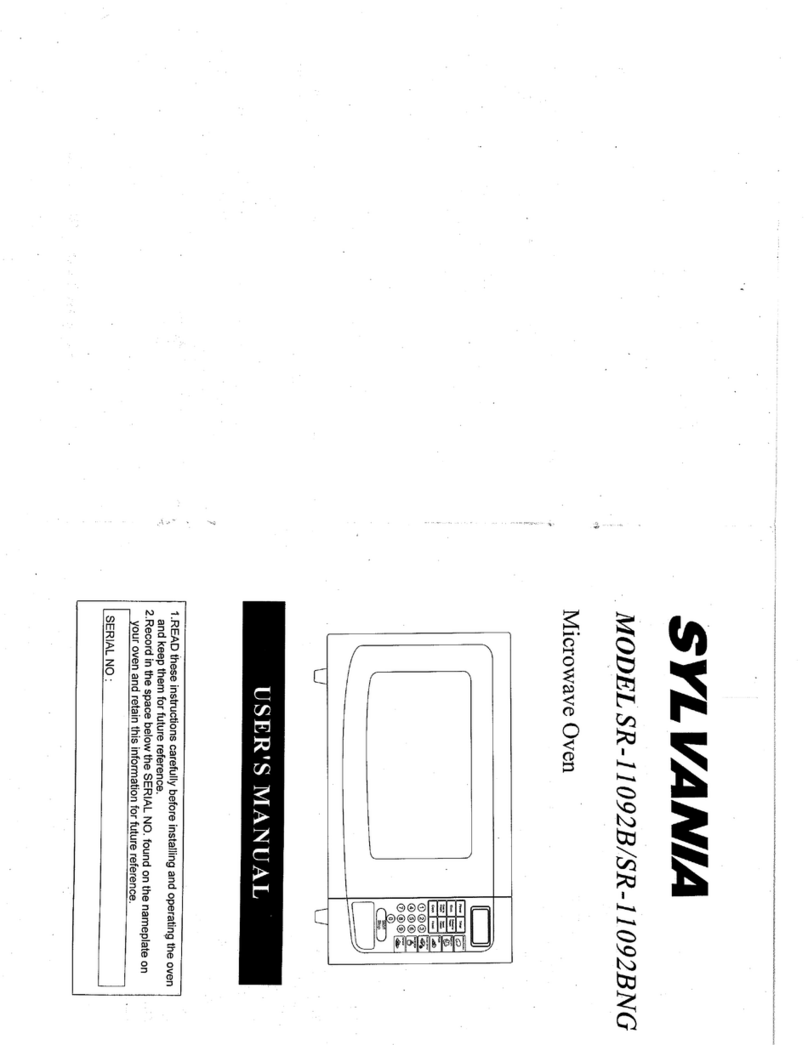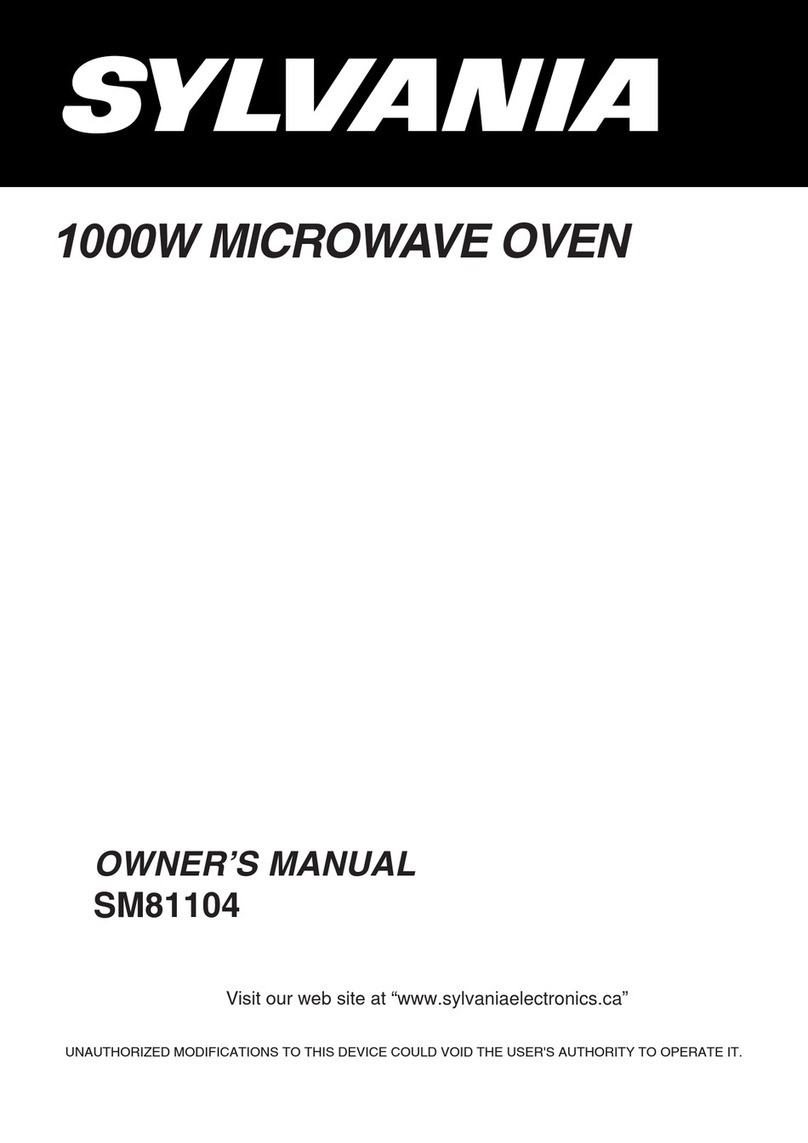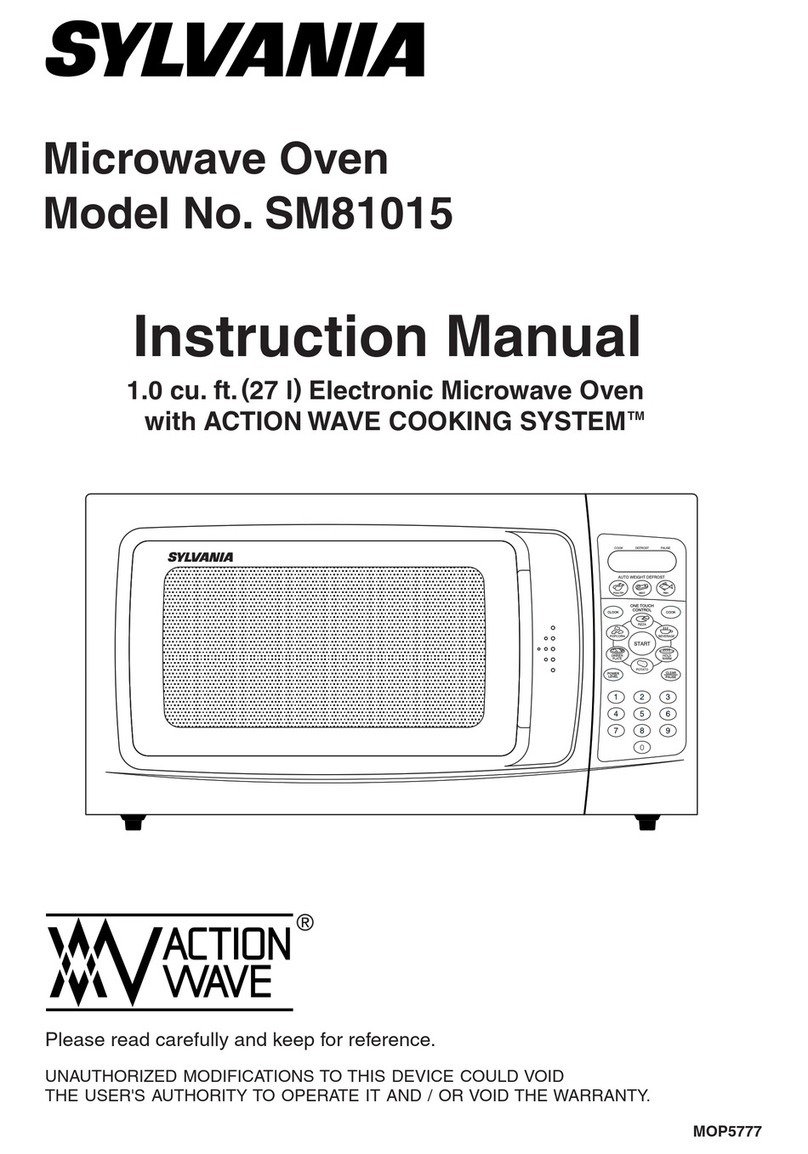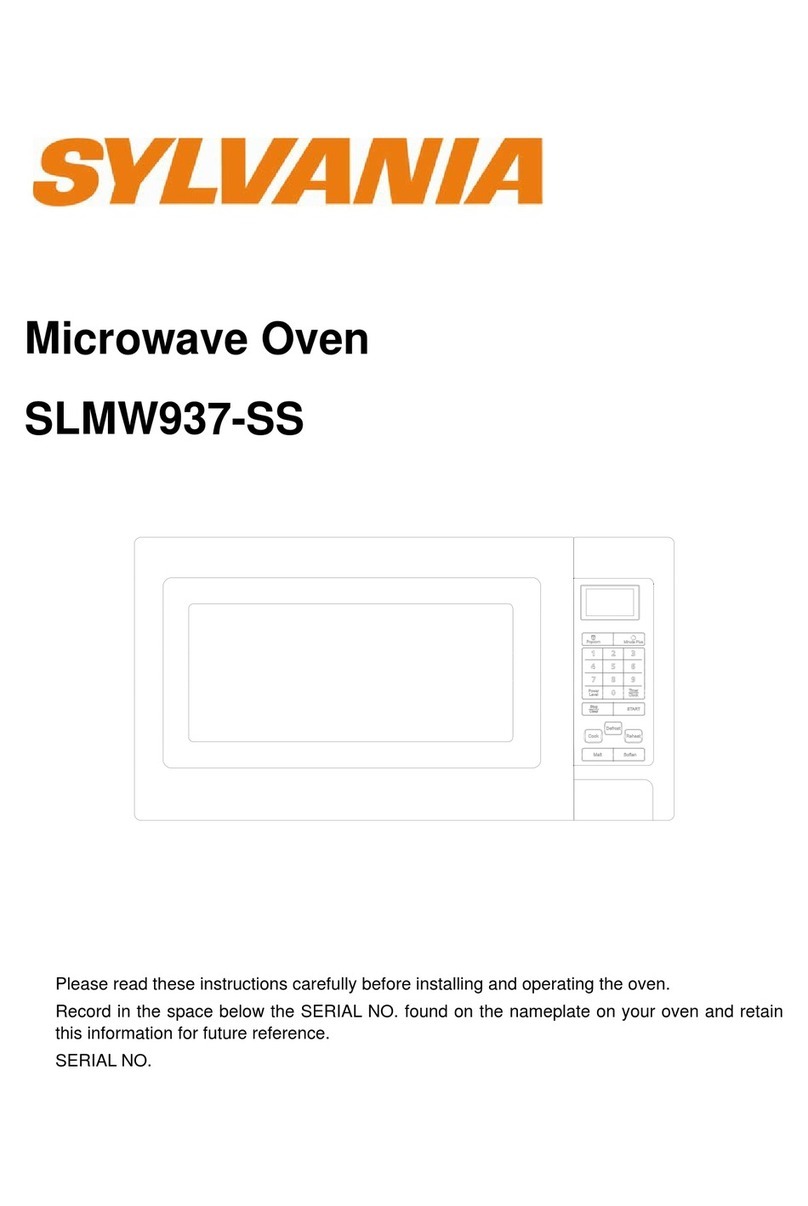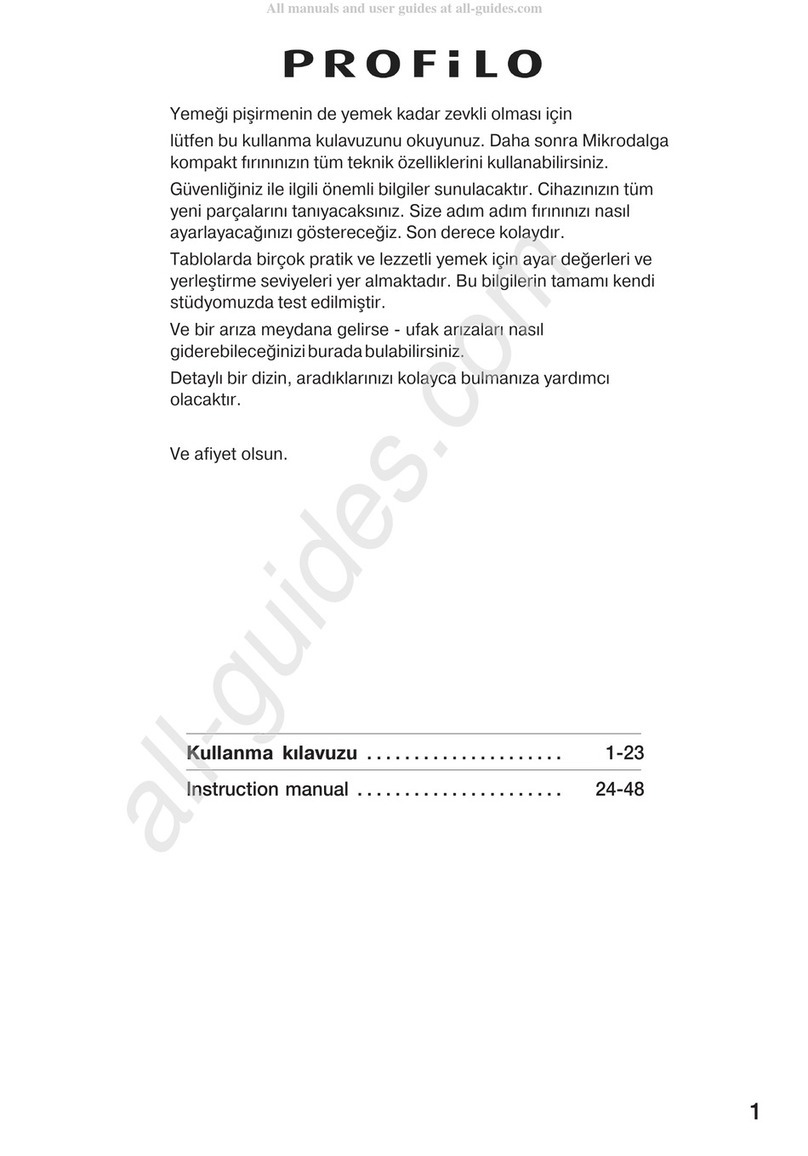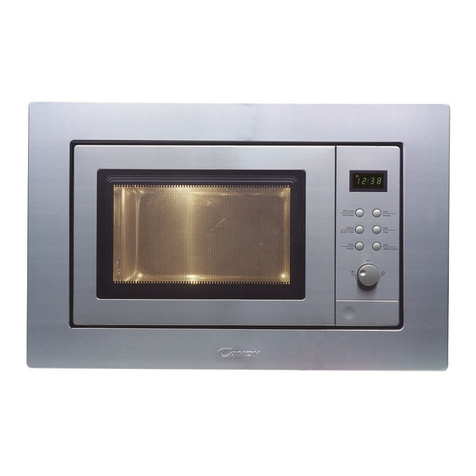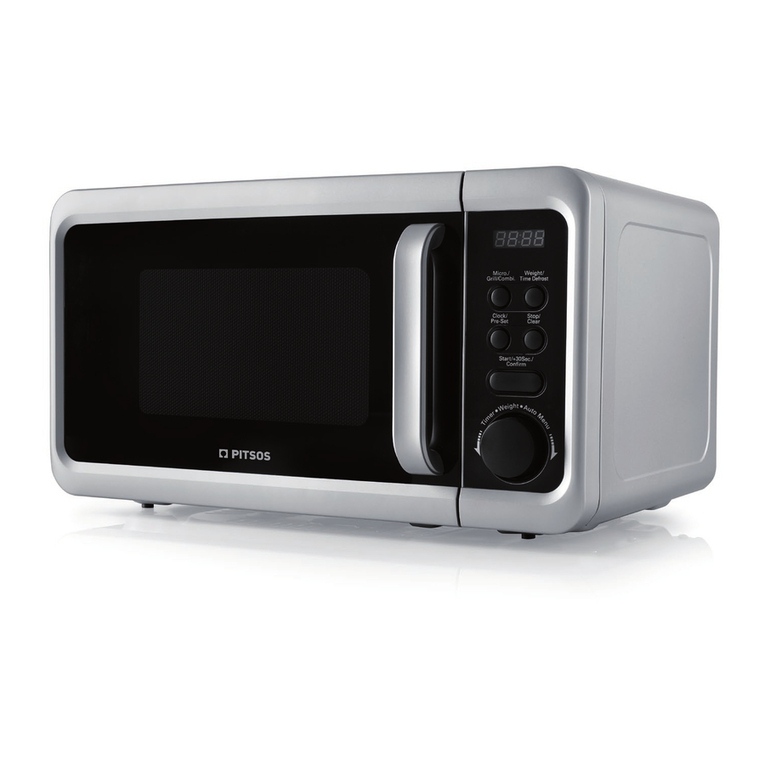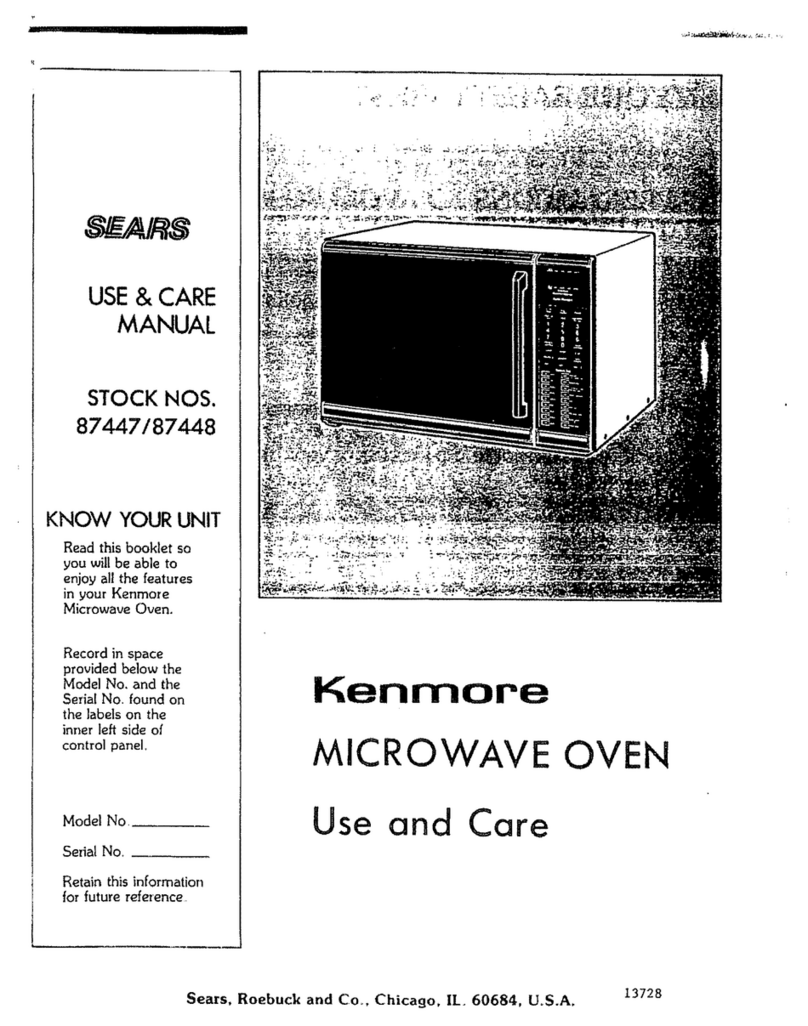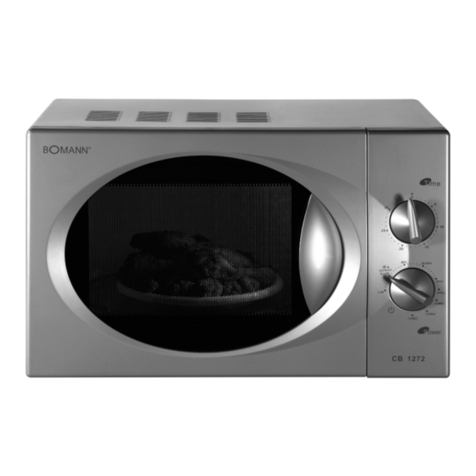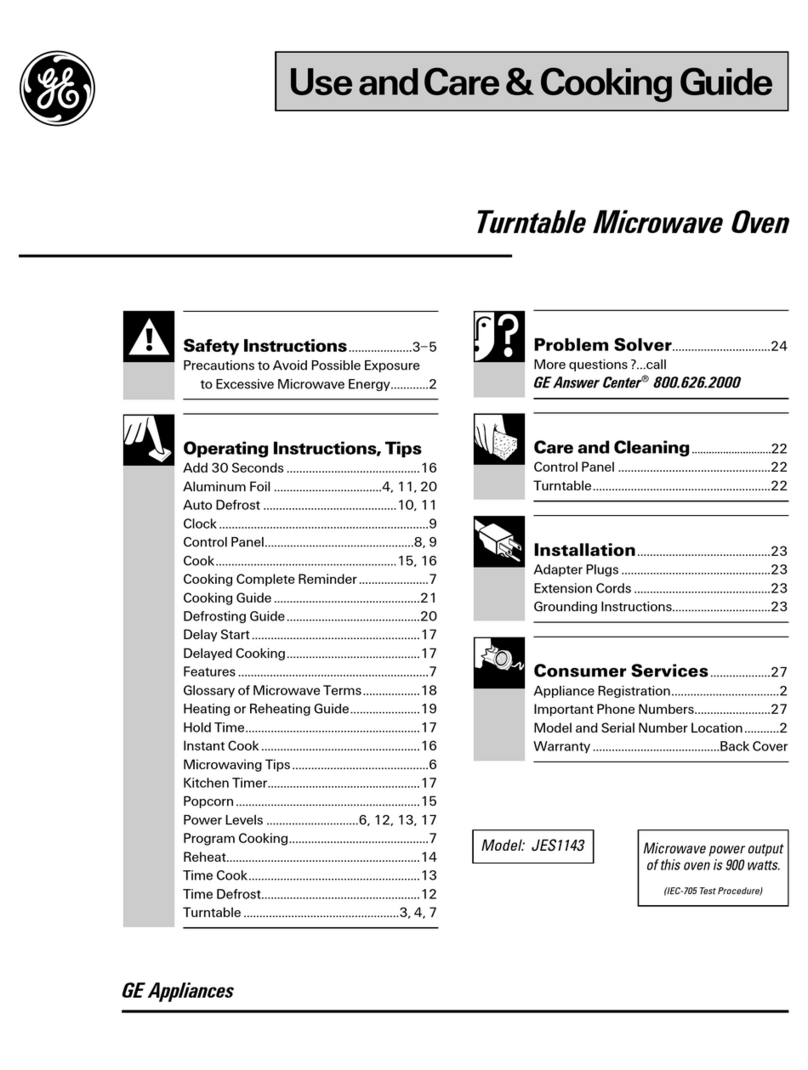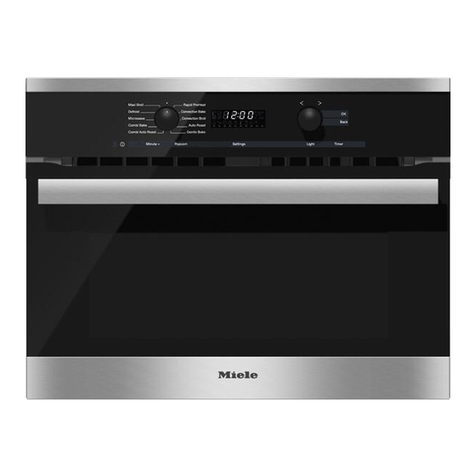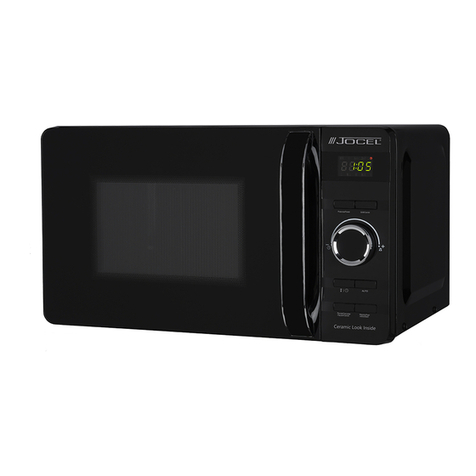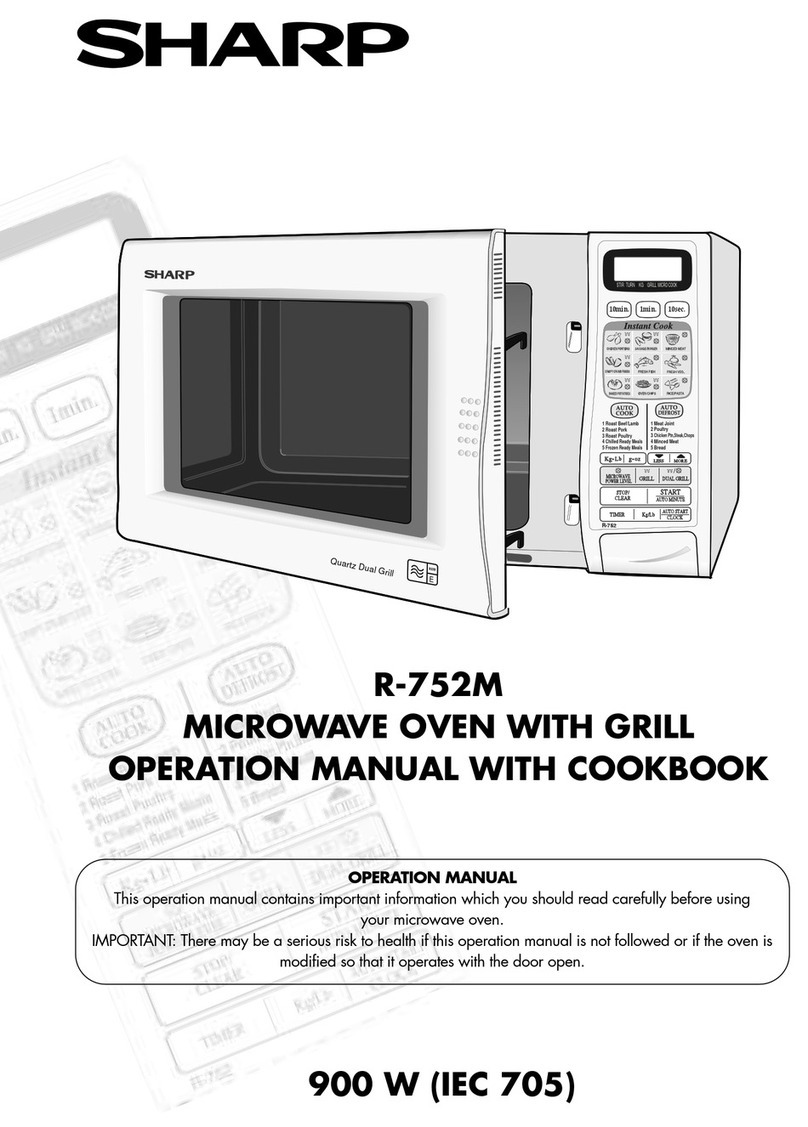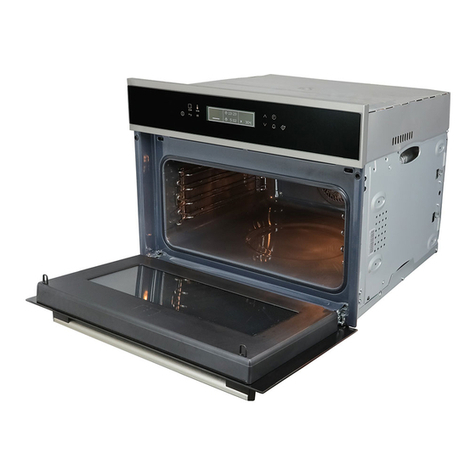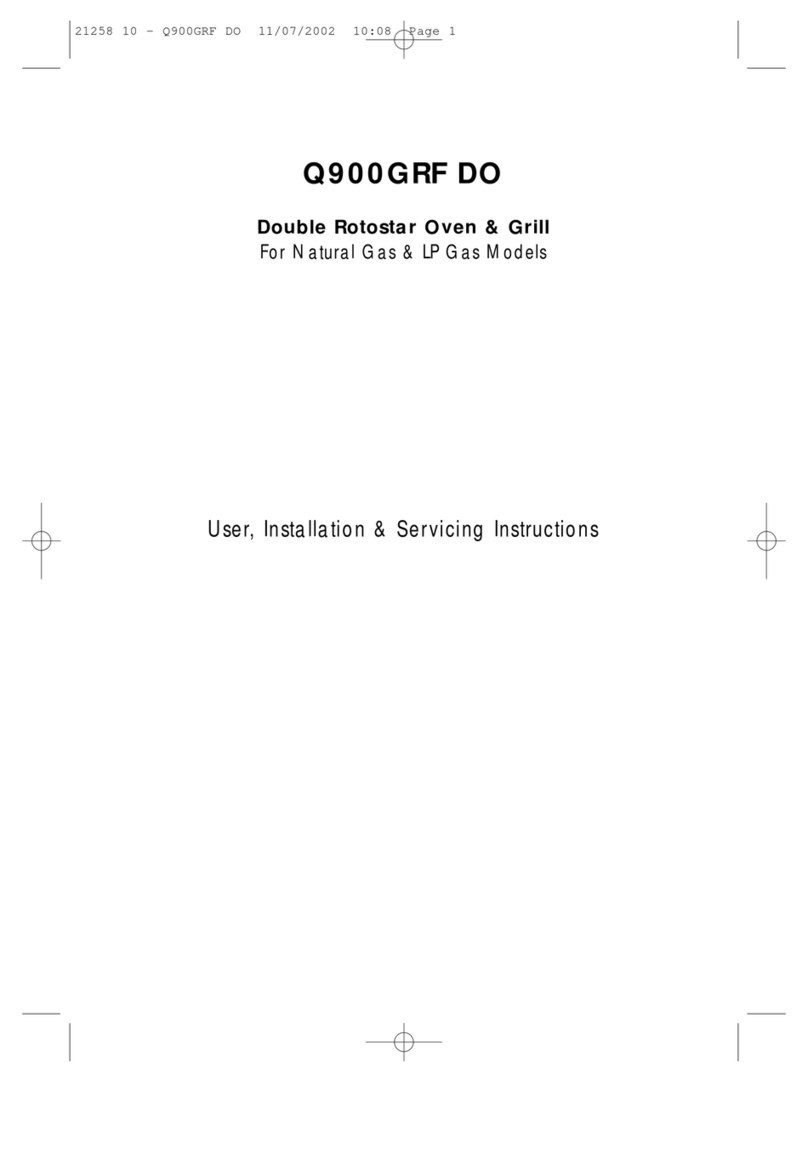Sylvania SC-11100 User manual

USER MANUAL
SYLVANIA
MODEL: SC-11100
CONVECTION MICROWAVE OVEN
Microwave Oven Owner's Manual
1. Do not attempt to operate this oven with the door open since open door operation
can result in harmful exposure to microwave energy. It is important not to defeat or
tamper with the safety interlocks.
2. Do not place any object between the oven front face and the door or allow soil or
cleaner residue to accumulate on sealing surfaces.
3. Do not operate the oven if it is damaged. It is particularly important that the oven
door close properly and that there is no damage to the
a. Door (bent),
b. Hinges and latches (broken or loosened),
c. Door seals and sealing surfaces.
4. The oven should not be adjusted or repaired by anyone except properly qualified
service personnel.
P
PR
RE
EC
CA
AU
UT
TI
IO
ON
NS
S
T
TO
O
A
AV
VO
OI
ID
D
P
PO
OS
SS
SI
IB
BL
LE
E
E
EX
XP
PO
OS
SU
UR
RE
E
T
TO
O
E
EX
XC
CE
ES
SS
SI
IV
VE
E
M
MI
IC
CR
RO
OW
WA
AV
VE
E
E
EN
NE
ER
RG
GY
Y
Please read these instructions carefully before installing and operating the oven.
Record in the space below the SERIAL NO. found on the nameplate on your oven and retain
this information for future reference.
SERIAL NO.

CONTENTS
PRECAUTIONS TO AVOID POSSIBLE EXPOSURE TO EXCESSIVE MICROWAVE ENERGY 0
SPECIFICATIONS--------------------------------------------------------------------------------------- 0
BEFORE YOU CALL FOR SERVICE--------------------------------------------------------------- 3
INSTALLATION ------------------------------------------------------------------------------------------ 3
GROUNDING INSTRUCTIONS---------------------------------------------------------------------- 3
RADIO INTERFERENCE------------------------------------------------------------------------------ 3
IMPORTANT SAFETY INSTRUCTIONS----------------------------------------------------------- 3
MICROWAVE COOKING PRINCIPLES ----------------------------------------------------------- 3
UTENSILS GUIDE -------------------------------------------------------------------------------------- 3
PART NAMES -------------------------------------------------------------------------------------------- 3
CONTROL PANEL -------------------------------------------------------------------------------------- 6
HOW TO SET THE OVEN CONTROLS ----------------------------------------------------------- 7
SETTING THE CLOCK ------------------------------------------------------------------------------ 7
MICROWAVE COOKING --------------------------------------------------------------------------- 7
GRILL---------------------------------------------------------------------------------------------------- 7
CONVECTION----------------------------------------------------------------------------------------- 7
ROAST -------------------------------------------------------------------------------------------------- 8
SPECIAL FEATURES ---------------------------------------------------------------------------------- 8
POPCORN --------------------------------------------------------------------------------------------- 8
REHEAT------------------------------------------------------------------------------------------------- 8
POTATO------------------------------------------------------------------------------------------------- 8
COMPU DEFROST ---------------------------------------------------------------------------------- 8
COMPU COOK ---------------------------------------------------------------------------------------- 9
COMPU PIZZA ---------------------------------------------------------------------------------------- 9
COMPU GRILL ---------------------------------------------------------------------------------------- 9
COMPU ROAST -------------------------------------------------------------------------------------- 9
COMPU BAKE--------------------------------------------------------------------------------------- 10
CLEANING AND CARE -------------------------------------------------------------------------------11
Power Consumption:
120V, 60Hz, 1450W (Microwave)
120V, 1400W (Convection)
120V, 1400W (top & bottom grill)
120V, 1000W (top grill)
120V, 400W (bottom grill)
Rated Microwave Output: 900W
Operation Frequency: 2450MHz
Outside Dimensions: 305mm(H)×525mm(W)×490mm(D)
Oven Cavity Dimensions: 219mm(H)×350mm(W)×355mm(D)
Oven Capacity: 28Litres
Cooking Uniformity: Turntable System{Φ314mm}
Net Weight: Approx. 22kg
*All data subject to verification by available data on the nameplate of the oven.
S
SP
PE
EC
CI
IF
FI
IC
CA
AT
TI
IO
ON
NS
S*
*

3
If the oven fails to operate:
1. Check to ensure that the oven is plugged in securely.
If it is not, remove the plug from the outlet, wait 10
seconds, and plug it in again securely.
2. Check for a blown circuit fuse or a tripped main circuit
breaker. If these seem to be operating properly, test
the outlet with another appliance.
3. Check to ensure that the control panel is programmed
correctly and the timer is set.
4. Check to ensure that the door is securely closed
engaging the door safety lock system. Otherwise, the
microwave will not operate.
IF NONE OF THE ABOVE RECTIFY THE SITUATION,
THEN CONTACT A QUALIFIED TECHNICIAN. DO NOT
TRY TO ADJUST OR REPAIR THE OVEN YOURSELF.
1. Make sure that all the packing materials are removed
from the inside of the door.
2. WARNING: Check the oven for any damage, such as
misaligned or bent door, damaged door seals and
sealing surface, broken or loose door hinges and
latches and dents inside the cavity or on the door. If
there is any damage, do not operate the oven and
contact qualified service personnel.
3. This microwave oven must be placed on a flat, stable
surface to hold its weight and the heaviest food likely
to be cooked in the oven.
4. Do not place the oven where heat, moisture, or high
humidity are generated, or near combustible materials.
5. For correct operation, the oven must have sufficient
airflow. Allow 20cm of space above the oven, 10cm at
back and 5cm at both sides. Do not cover or block any
openings on the appliance. Do not remove feet.
6. Do not operate the oven without glass tray, roller
support, and shaft in their proper positions.
7. Make sure that the power supply cord is undamaged
and does not run under the oven or over any hot or
sharp surface.
8. Do not use the oven outdoors.
This appliance must be grounded. In the event of an
electrical short circuit, grounding reduces risk of electric
shock by providing an escape wire for the electric current.
WARNING Improper use of the grounding plug can result
in a risk of electric shock.
ELECTRICAL REQUIREMENTS
The electrical requirements are a 120 volt 60 Hz, AC only,
20 amp. It is recommended that a separate circuit serving
only the oven be provided. The oven is equipped with a
3-prong grounding plug. It must be plugged into a wall
receptacle that is properly installed and grounded.
EXTENSION CORD
1. If it is necessary to use an extension cord, use only a
3-wire extension cord that has a 3-blade grounding plug
and a 3-slot receptacle that will accept the plug on the
microwave oven. The marked rating of the extension cord
shall be equal to or greater than the electrical rating of the
appliance, or
2. Do not use an extension cord. If the power supply cord
is too short, have a qualified electrician or serviceman
install an outlet near the appliance.
RADIO OR TV INTERFERENCE
Should there be any interference caused by the
microwave oven to your radio or TV, check that the
microwave oven is on a different circuit, relocate the radio
or TV as far away from the oven as feasible or check
position and signal of receiving antenna.
Notes:
If you have any questions about the grounding or electrical
instructions, consult a qualified electrician or service
person.
Neither
SYLVANIA
nor the dealer can accept any liability
for damage to the oven or personal injury resulting from
failure to observe the electrical connection procedures.
B
BE
EF
FO
OR
RE
E
Y
YO
OU
U
C
CA
AL
LL
L
F
FO
OR
R
S
SE
ER
RV
VI
IC
CE
E
I
IN
NS
ST
TA
AL
LL
LA
AT
TI
IO
ON
N
G
GR
RO
OU
UN
ND
DI
IN
NG
G
I
IN
NS
ST
TR
RU
UC
CT
TI
IO
ON
NS
S

3
Operation of the microwave oven can cause
interference to your radio, TV, or similar equipment.
When there is interference, it may be reduced or
eliminated by taking the following measures:
1. Clean door and sealing surface of the oven.
2. Reorient the receiving antenna of radio or
television.
3. Relocate the microwave oven with respect to the
receiver.
4. Move the microwave oven away from the receiver.
5. Plug the microwave oven into a different outlet so
that microwave oven and receiver are on different
branch circuits.
When using electrical appliance basic safety precautions
should be followed, including the following:
WARNING: To reduce the risk of burns, electric shock, fire,
or exposure to excessive microwave energy:
1. Read all instructions before using the appliance.
2. Use this appliance only for its intended use as
described in this manual. Do not use corrosive
chemicals or vapors in this appliance. This type of
oven is specifically designed to heat, cook or dry food.
It is not designed for industrial or laboratory use.
3. Do not operate the oven when empty.
4. Do not operate this appliance if it has a damaged cord
or plug, if it is not working properly, or if it has been
damaged or dropped. If the supply cord is damaged, it
must be replaced by the manufacturer or its service
agent or a similarly qualified person in order to avoid a
hazard.
5. WARNING: Do not allow children to use oven without
supervision.
6. To reduce the risk of fire in the oven cavity:
a. When heating food in plastic or paper container,
keep an eye on the oven due to the possibility of
ignition;
b. Remove wire twist-ties from paper or plastic bags
before placing bag in oven.
c. If smoke is observed, switch off or unplug the
appliance. Keep the door closed in order to stifle any
flames.
d. Do not use the cavity for storage purposes. Do
not leave paper products, cooking utensils or food in
the cavity when not in use.
7. WARNING: Liquid or other food must not be heated in
sealed containers since they are likely to explode.
8. Microwave heating of beverage can result in delayed
eruptive boiling; therefore care has to be taken when
handling the container.
9. Do not fry food in the oven. Hot oil can damage oven
parts and utensils and even result in skin burns.
10. Eggs in their shell and whole hard-boiled eggs should
not be heated in microwave ovens since they may
explode even after microwave heating has ended.
11. Pierce foods with heavy skins such as potatoes, whole
squashes, apples and chestnuts before cooking.
12. The contents of feeding bottles and baby jars should
be stirred or shaken and the temperature should be
checked before serving in order to avoid burns.
13. Cooking utensils may become hot because of heat
transferred from the heated food. Potholders may be
needed to handle the utensil.
14. Utensils should be checked to ensure that they are
suitable for use in microwave oven.
15. WARNING: It is hazardous for anyone other than a
trained person to carry out any service or repair
operation which involves the removal of any cover
which gives protection against exposure to microwave
energy.
R
RA
AD
DI
IO
O
I
IN
NT
TE
ER
RF
FE
ER
RE
EN
NC
CE
E
I
IM
MP
PO
OR
RT
TA
AN
NT
T
S
SA
AF
FE
ET
TY
Y
I
IN
NS
ST
TR
RU
UC
CT
TI
IO
ON
NS
S

3
1. Arrange food carefully. Place thickest areas
towards outside of dish.
2. Watch cooking time. Cook for the shortest
amount of time indicated and add more as
needed. Food severely overcooked can smoke or
ignite.
3. Cover foods while cooking. Covers prevent
spattering and help foods to cook evenly.
4. Turn foods over once during microwaving to
speed cooking of such foods as chicken and
hamburgers. Large items like roasts must be
turned over at least once.
5. Rearrange foods such as meatballs halfway
through cooking both from top to bottom and from
the center of the dish to the outside.
1. The ideal material for a microwave utensil is transparent
to microwave, it allows energy to pass through the
container and heat the food. Only use a temperature
probe recommended for this oven.
2. Microwave can not penetrate metal, so metal utensils or
dishes with metallic trim should not be used.
3. Do not use recycled paper products when microwave
cooking, as they may contain small metal fragments
which may cause sparks and/or fires.
4. Round /oval dishes rather than square/oblong ones are
recommend, as food in corners tends to overcook.
5. Narrow strips of aluminum foil may be used to prevent
overcooking of exposed areas. But be careful don’t use
too much and keep a distance of 1 inch (2.54cm)
between foil and cavity.
The list below is a general guide to help you select the
correct utensils.
Cookware Microwave Grill Convection Combination*
Heat–Resistant Glass Yes Yes Yes Yes
Non Heat–Resistant Glass No No No No
Heat–Resistant Ceramics Yes Yes Yes Yes
Microwave–Safe Plastic Dish Yes No No No
Kitchen Paper Yes No No No
Metal Tray No Yes Yes No
Metal Rack No Yes Yes No
Aluminum Foil & Foil Container No Yes Yes No
* Combination: applicable for both "microwave + grill", and "microwave + convection" cooking.
1. Door Safety Lock System
2. Oven Window
3. Oven Air Vent
4. Shaft
5. Roller Ring
6. Glass Tray
7. Control Panel
8. Grill Heater
9. Baking plate
M
MI
IC
CR
RO
OW
WA
AV
VE
E
C
CO
OO
OK
KI
IN
NG
G
P
PR
RI
IN
NC
CI
IP
PL
LE
ES
S
U
UT
TE
EN
NS
SI
IL
LS
S
G
GU
UI
ID
DE
E
P
PA
AR
RT
T
N
NA
AM
ME
ES
S
Table of contents
Other Sylvania Microwave Oven manuals
Popular Microwave Oven manuals by other brands

Conrad Electronic
Conrad Electronic 2372935 operating instructions
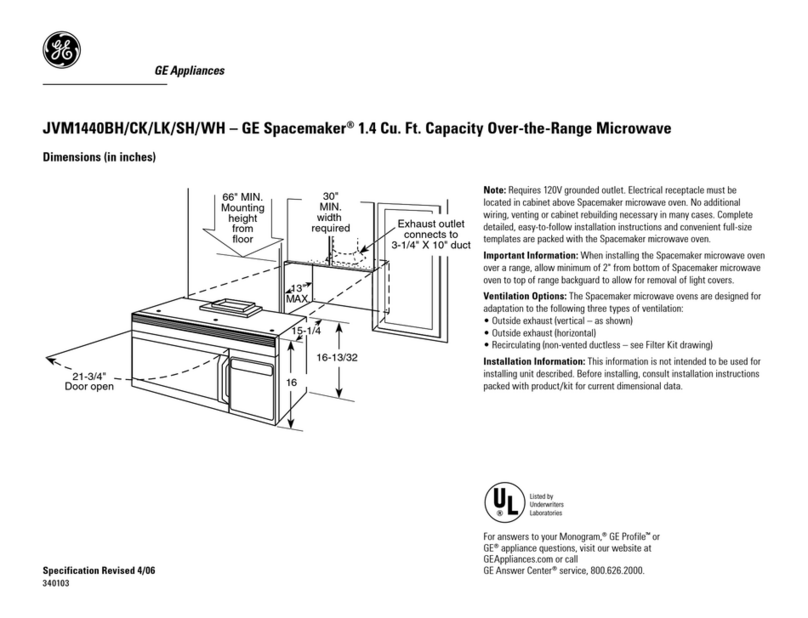
GE
GE Spacemaker JVM1440BH datasheet
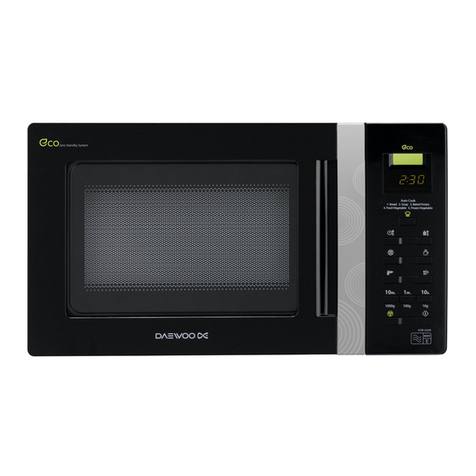
DAEWOO ELECTRONICS
DAEWOO ELECTRONICS KOR-6L8K5S83 Operating instructions & cook book
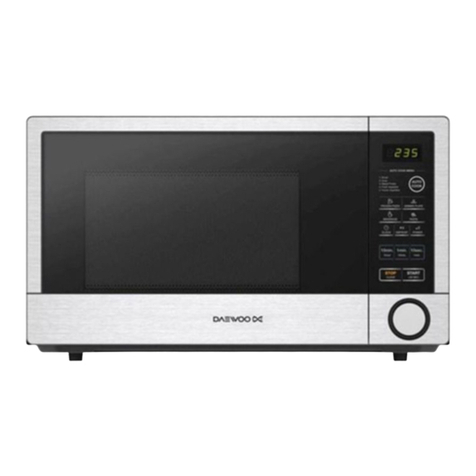
DAEWOO ELECTRONICS
DAEWOO ELECTRONICS KOR-1N5A9S Operating instructions & cook book
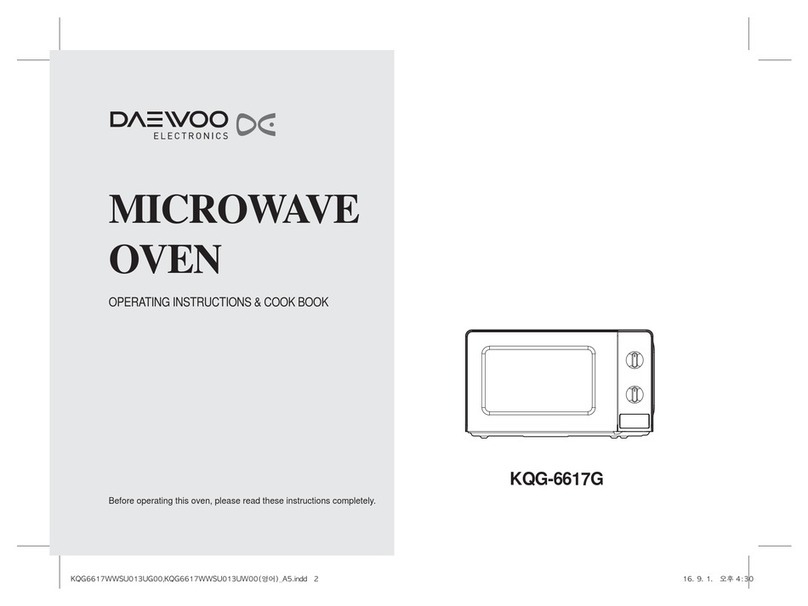
Daewoo
Daewoo KQG-6617G Operating instructions & cook book
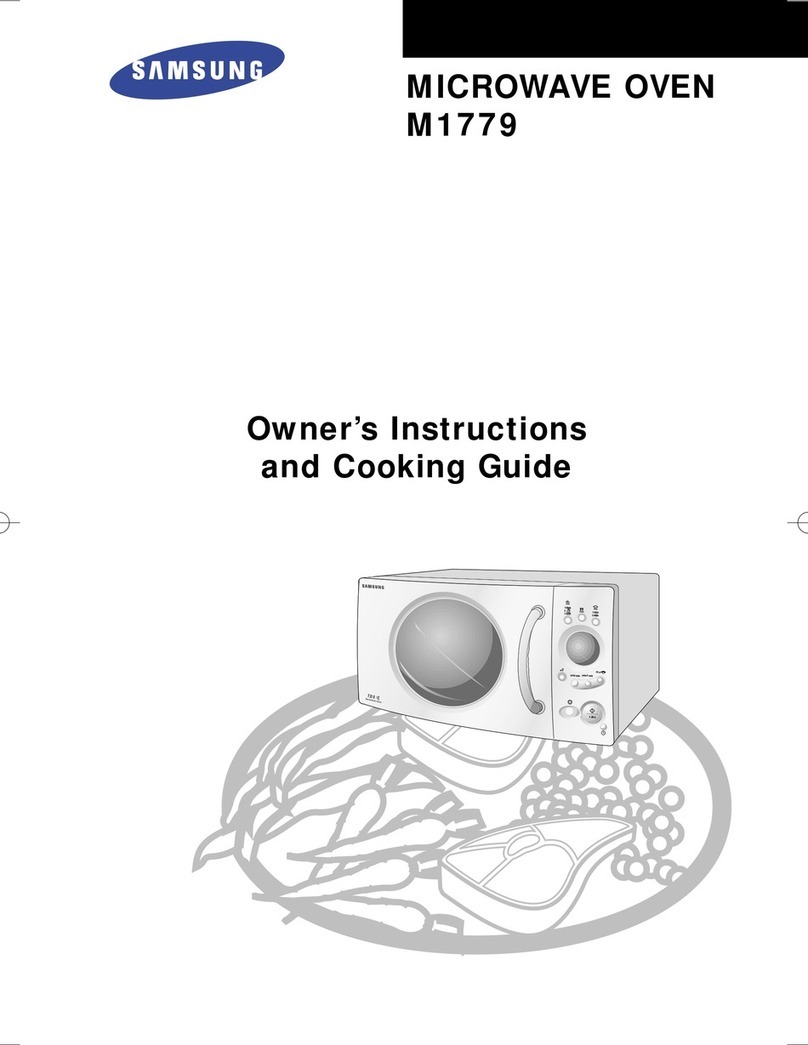
Samsung
Samsung M1779 Owner's instructions
